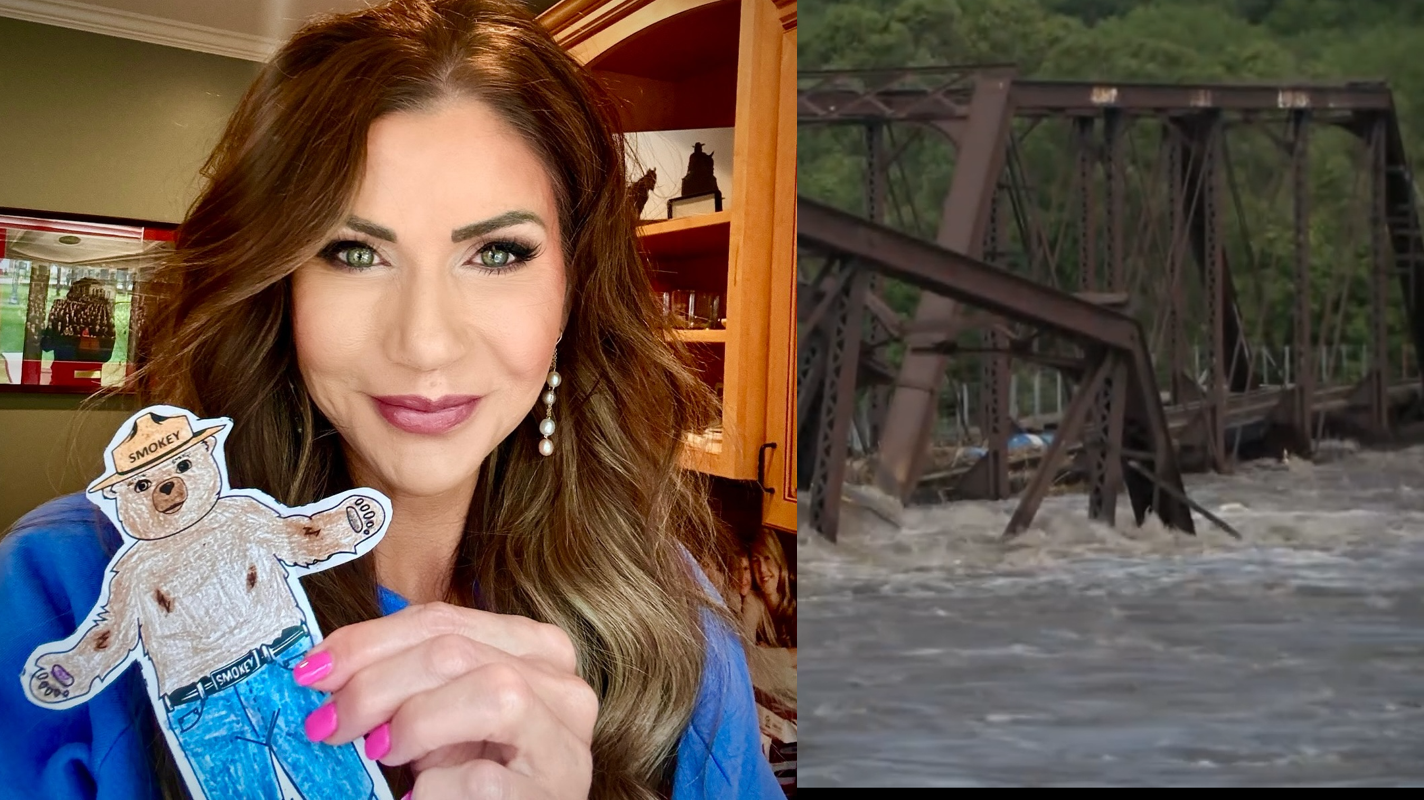In the wake of severe flooding in southeast South Dakota, Governor Kristi Noem’s response has come under intense scrutiny. As heavy rains inundated the region, Noem’s actions—or lack thereof—have revealed significant shortcomings in her leadership during a crisis. When the deluge began, Noem was notably absent, attending a political conference and a television interview out of state, leaving many residents feeling abandoned in their time of need.
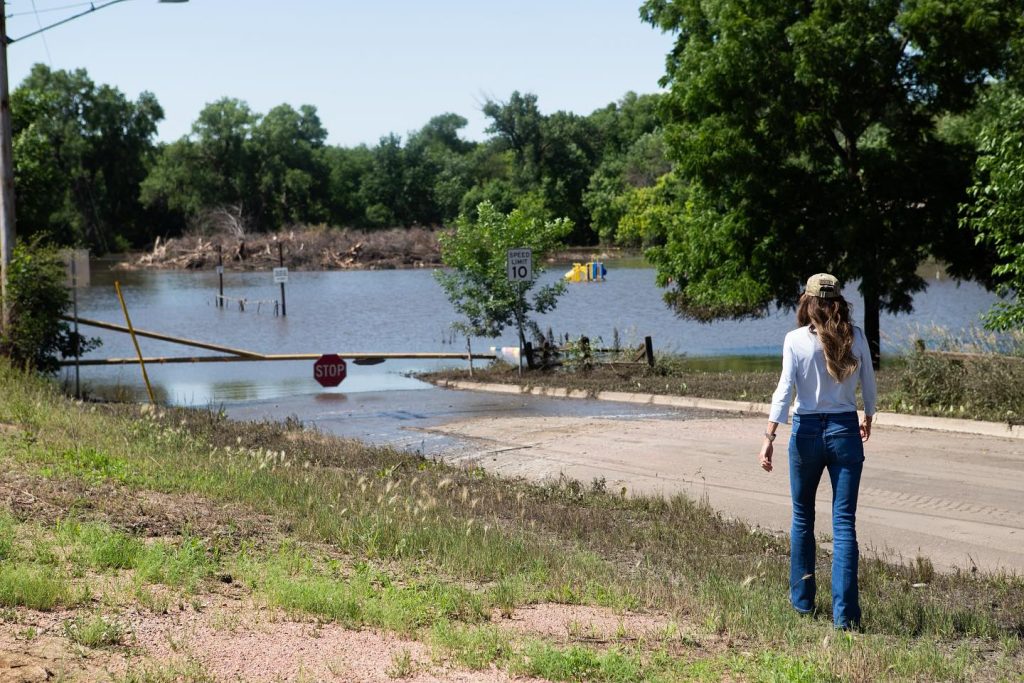
The catastrophic floodwaters surged toward McCook Lake, overwhelming the area with little warning. Noem’s brief appearance and inadequate crisis communication did little to prepare the community for the impending disaster. Her decision to forgo activating the National Guard, citing the high costs and reserving their use for “very crisis situations,” further compounded the problem. This rationale stands in stark contrast to her previous decisions to deploy troops to the Texas-Mexico border multiple times, funded by the state’s Emergency and Disaster Fund.
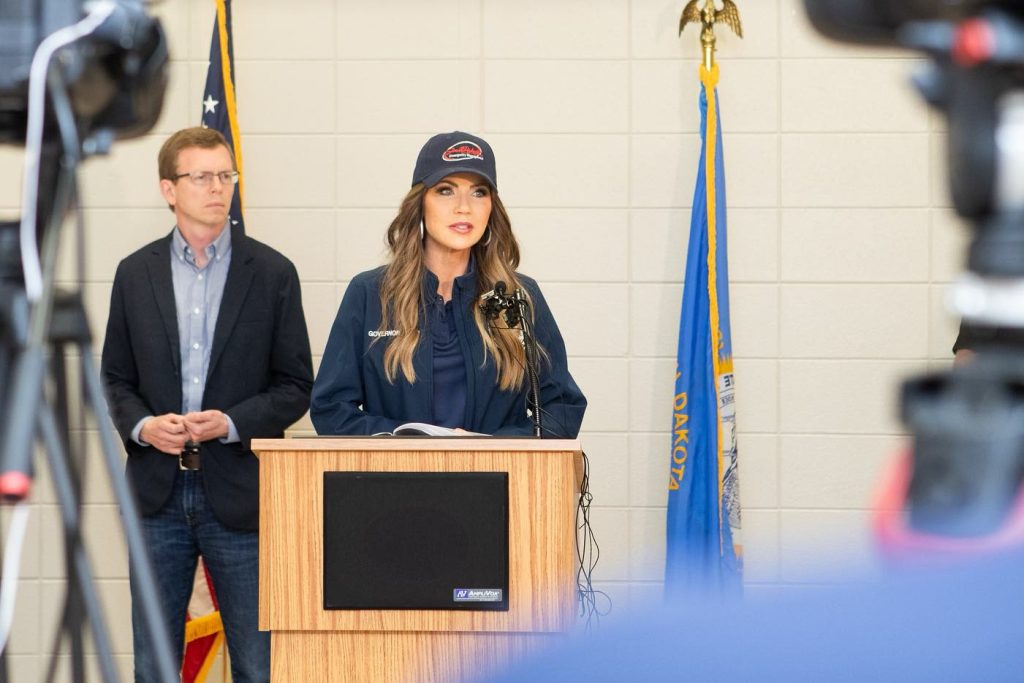
Noem has defended her actions, claiming that her experience guided a robust flood mitigation and response effort. “We learn with every flood that happens,” she stated at a press conference, asserting that no mistakes were made in the response. However, the severity of the recent flood has highlighted significant gaps in her leadership and preparedness.

The flooding, which began with three days of relentless rain from June 20-22, saw the Big Sioux River swell to historic levels. The towns along its path, particularly McCook Lake and its 230 homes, faced unprecedented threats. Despite knowing the potential for record-breaking water levels, Noem did not sound the alarm sufficiently early or clearly enough. Her delayed return from out-of-state engagements only exacerbated the sense of abandonment felt by those in the flood’s path.

On June 22, while Noem was speaking at a political conference in Washington, D.C., and appearing on NBC’s “Meet the Press,” the situation in South Dakota was deteriorating rapidly. Her absence was noted as floodwaters continued to rise, with local authorities left to manage the crisis with limited resources and communication. By the time Noem returned to lead a press conference in North Sioux City, critical time had been lost.

During the press conference, Noem discussed various measures such as a voluntary evacuation order and the construction of a temporary levee. However, her reassurances fell short of addressing the immediate dangers. When asked about McCook Lake, she vaguely advised residents to protect their property without clearly explaining the severity of the threat or the purpose of the levee construction.

As the floodwaters continued to rise, Noem departed again, this time to Memphis, Tennessee, for a political fundraiser. Her absence during this critical period left local officials and residents to fend for themselves as the Big Sioux River surged over Interstate 29, inundating homes and causing extensive damage. Rescue teams worked tirelessly through the night to evacuate and assist residents, underscoring the need for more decisive and present leadership.
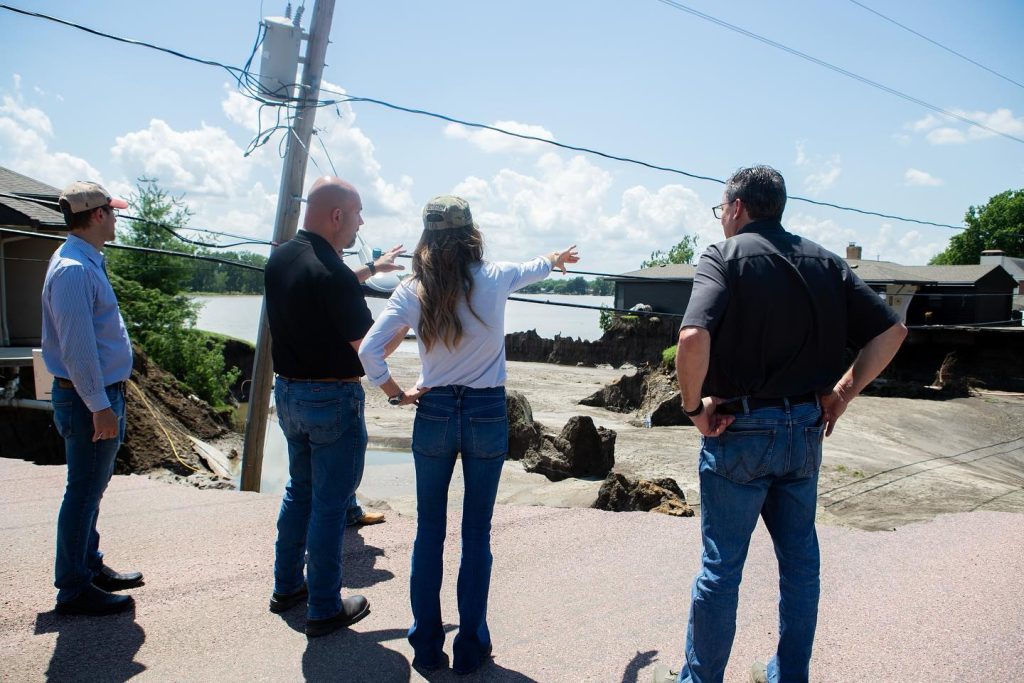
Upon her return, Noem described the devastation in vivid terms, acknowledging the widespread destruction and the challenges faced by the affected communities. Yet, she maintained that the mitigation plan was sound, albeit overwhelmed by the unprecedented volume of water. This admission, however, did little to alleviate the frustration and sense of betrayal felt by those who believed more could have been done to warn and protect them.
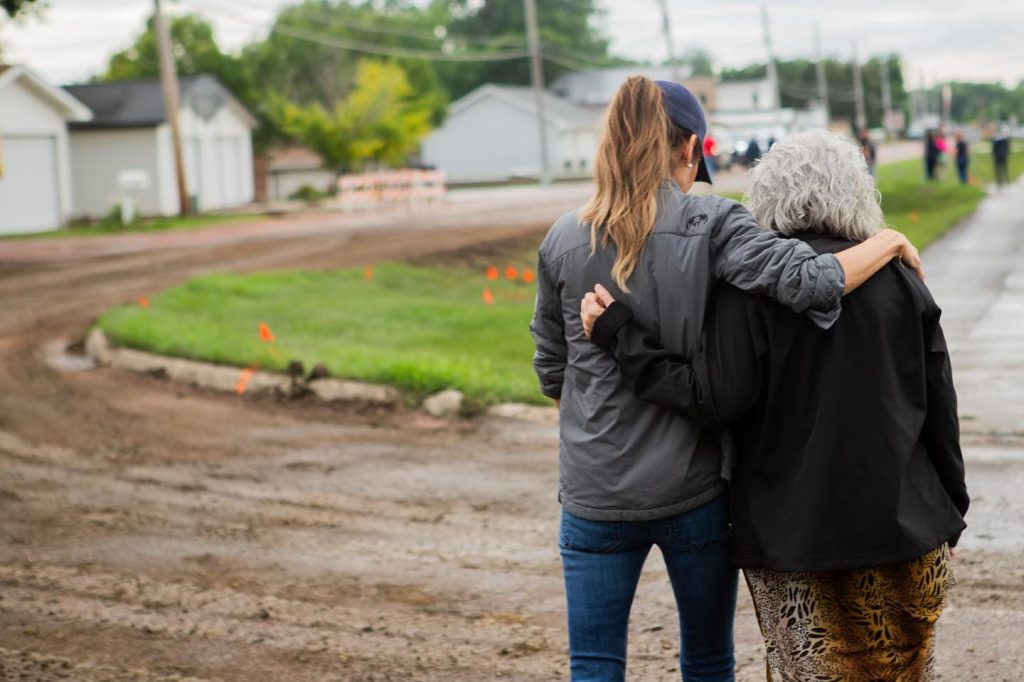
The stark contrast between Noem’s handling of this flood and her predecessor’s response to a similar event in 2014 further highlights her leadership deficiencies. Former Governor Dennis Daugaard had issued a clear and urgent warning about the dangers posed by the rising waters, a level of communication that was sorely lacking in the recent crisis.
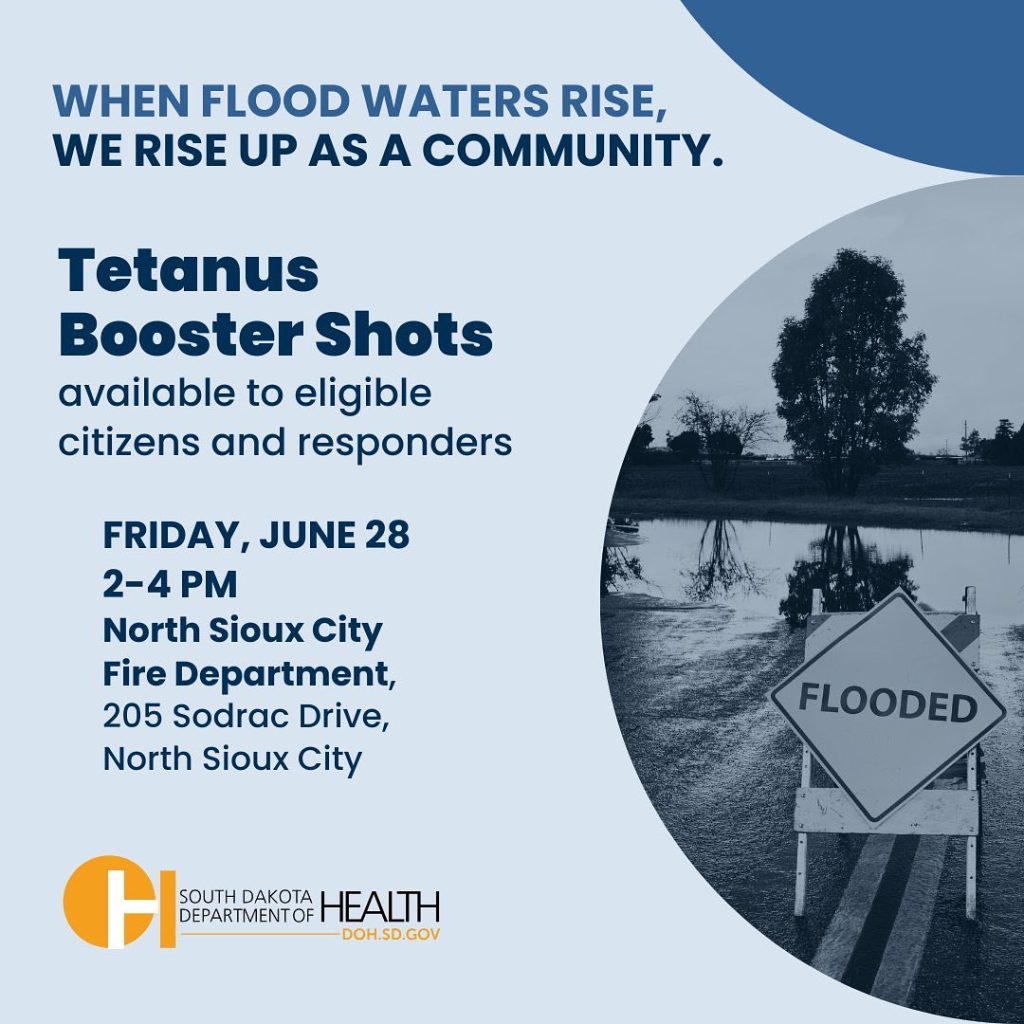
As southeast South Dakota begins the arduous process of recovery, with entire communities devastated and lives upended, the lessons from this flood are clear. The residents of McCook Lake and surrounding areas have learned a painful lesson about the priorities and effectiveness of their leadership. Governor Noem’s response to this natural disaster has left many questioning her commitment to the people she serves, as she seemed more focused on her political ambitions than on the urgent needs of her constituents.

